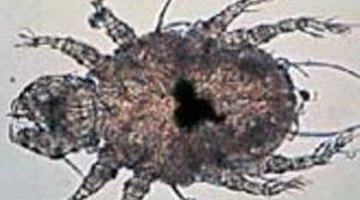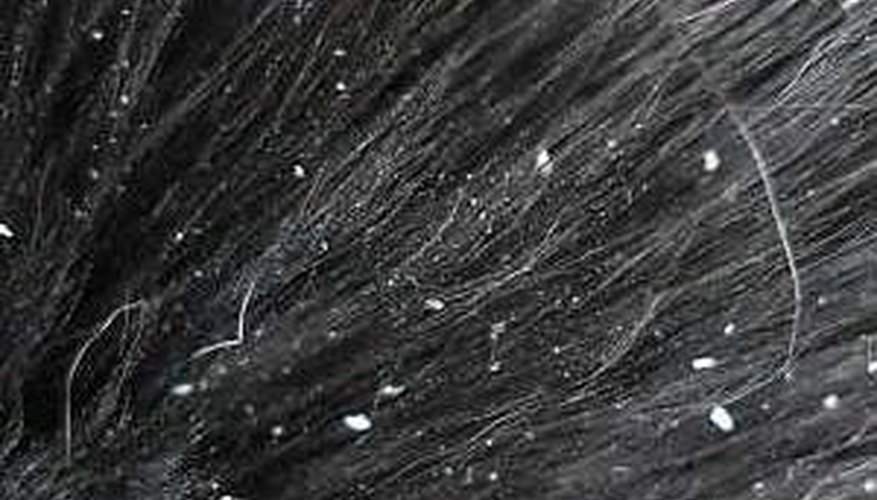Feline dandruff is actually a common problem. In fact, cats get dandruff just about as often as people do, and usually for the same reasons. Sometimes it's just a simple case of some visible flaking due to the skin being a little too dry. But, since cats don't wear dark-coloured sweaters, minor dandruff often goes unnoticed.
Ideally, a healthy cat should have soft, supple skin with no dandruff, scabs or sores. Real dandruff is actually a mild type of dermatitis.
However, the presence of dandruff can signal something as simple as improper diet or the presence of parasites. It can also be a sign of a more sinister culprit, such as a dangerous chronic disease.
Significance

Feline dandruff is not the problem. It is a sign or symptom that there is something not quite right going on with the pet's health.
Something has caused the cat's skin to become dry, flaky and itchy.
So the cat scratches excessively to relieve the discomfort. Cats don't know when they should stop scratching and often continue to scratch to the point of becoming raw and producing open sores that can result in skin infections.
Pet owners often mistakenly think that the cat just needs a bath. Although occasionally feline dandruff shampoos may very well be all that is needed, often there is an underlying cause of the condition that still needs to be treated.
- Feline dandruff is not the problem.
- Although occasionally feline dandruff shampoos may very well be all that is needed, often there is an underlying cause of the condition that still needs to be treated.
All pet problems should be addressed and dealt with accordingly, and dandruff is no exception. Consulting a veterinarian is always advised.
Types
Some cats, like some people, just have dry skin because that's what nature gave them. Many of the things that aggravate dry skin in people produce the same results in cats. Dandruff caused by dry skin is much worse in the winter because indoor heating depletes the air of moisture. Excessive bathing can dry the pet's skin, too. Noticeable dandruff be a result of poor grooming on the cat's part. Arthritis or excessive weight may prevent some cat from reaching their backs during grooming.
In many cases, the pet's diet is responsible for feline dandruff.
Lack of fatty acids is the most likely culprit to cause dry skin in pets. Nutritional deficiencies often cause disturbances in the skin's balance, which usually results in dry skin and dandruff.
Another easily diagnosed cause of feline dandruff is internal or external parasite infestation. The presence of intestinal tapeworms can trigger dandruff in cats. Fleas, mites and other common external pests can produce allergic skin reactions in cats, often leading to dandruff. Fleas are the most likely external feline parasites to cause allergic skin reactions.
Although rare, hypothyroidism may be the troublemaker. An underactive thyroid gland doesn't produce enough hormones, causing the pet's dandruff problem. Some of the signs of hypothyroidism, which can be fatal if not properly treated, include thinning fur, loss of energy and weight gain.
Approximately one in 200 to 400 cats suffers from diabetes mellitus (DM), a common cause of feline dandruff that progresses as the condition becomes worse.
This condition is found more in males than females, and is particularly prevalent in obese and older cats, although pets of any age can be stricken.
DM is caused by the cat's inability to produce adequate levels of the hormone insulin. Symptoms include loss of appetite, vomiting, dehydration, weakness, abnormal breathing and loss of weight.
- Some cats, like some people, just have dry skin because that's what nature gave them.
- The presence of intestinal tapeworms can trigger dandruff in cats.
- Symptoms include loss of appetite, vomiting, dehydration, weakness, abnormal breathing and loss of weight.
Prevention/Solution
For simple dry skin in cats, proper and adequate grooming may provide the cure. Slicker brushes are perfect for removing itchy dead fur and skin. Regular brushing also helps to stimulate the production of natural oils and to distribute them throughout the entire coat. Bathing should be avoided, although an occasional powder shampooing can help to remove dirt and debris. If the cat is unable to reach its back to groom itself, after brushing the pet, rub its back with a warm damp cloth, which imitates natural grooming. If the dandruff and excessively dry skin persist, the pet owner should consult a veterinarian.
Nutritional deficiencies leading to feline dandruff may be caused by low-quality foods. Particularly notorious are low-cost commercial cat foods, which are extremely low quality.
Adequate nutrition for cats can only be maintained by feeding them nutritional diets.
Feeding them fish-oil supplements can help to alleviate feline dandruff discomfort, but it is not enough to correct an unhealthy diet. Other supplements that may help are essential fatty acids, vitamin B complex, vitamin E, zinc and proteins. A veterinary consultation may be necessary to correctly diagnose and treat feline nutritional deficiencies.
If the pet owner suspects the possible presence of internal parasites like tapeworms--known to cause dandruff in felines--a trip to the vet is the only answer. A fecal exam is necessary to determine if an infestation is present and which organisms are causing it. Often multiple types of parasites will be active at the same time. This is not an issue with which a pet owner should take the do-it-yourself approach.
Proper diagnosis and medical treatment are the only cures for internal parasitic infestations. The cat should be kept on a regular worming schedule as prescribed by the vet.
Most external parasitic infestations, also likely to cause dandruff, can be easily identified by the pet owner. Excessive scratching and the presence of tiny black dots (flea dirt) on the pet's skin are signs of external parasites. Proper prevention and treatment of the pet and the home environment, if routinely practised, are usually sufficient to protect the household from infestations.
Hypothyroidism requires veterinarian diagnosis and treatment.
Administration of maintenance doses of anti-thyroid drugs, surgical removal of the thyroid gland, or radioactive iodine treatments will be prescribed by the vet. The treatment avenue that the doctor chooses to pursue will be based upon factors such as the cat's age, overall health and severity of disease symptoms.
Diabetes mellitus is another condition that must be diagnosed and treated by a veterinarian. The cat will be tested for levels of sugar in both blood and urine.
The good news is that feline diabetes is usually easily managed.
- For simple dry skin in cats, proper and adequate grooming may provide the cure.
- Most external parasitic infestations, also likely to cause dandruff, can be easily identified by the pet owner.
- The good news is that feline diabetes is usually easily managed.
The veterinarian will recommend proper diet and weight control measures, and will prescribe either oral or injectable insulin for the pet; glucose and insulin levels will be carefully monitored. More good news is that as the DM is brought under control, the dandruff associated with it will begin to dissipate.
Considerations

Although a very rare condition, cheyletiellosis mites may cause scaly, itchy skin in cats.
Known as “walking dandruff,” the parasitic mites that produce the condition in cats can infest humans as well.
The dandruff will appear to be walking across the skin of the pet as the mites move around under the scales. This contagious condition is acute, or occurs suddenly, and looks like a very bad case of dandruff.
Fur loss is common, and the flaking and scaling is usually worse on the cat's sides, neck and back.
- Although a very rare condition, cheyletiellosis mites may cause scaly, itchy skin in cats.
- Fur loss is common, and the flaking and scaling is usually worse on the cat's sides, neck and back.
The mites can live for several days off of the host, and drop eggs into carpet and furnishings in the home, producing further infestations. Walking dandruff should be treated only by a veterinarian.
Warning
Obviously some of the simple causes of dandruff can easily be relieved by the pet owner.
- Obviously some of the simple causes of dandruff can easily be relieved by the pet owner.
Good grooming, proper nutrition and freedom from fleas are all conditions that can be managed. But the average person cannot possibly diagnose and treat things such as diabetes, thyroid disorders or other diseases or conditions without the advice of a veterinarian.
Although the list of some of the signs and symptoms that a vet should be consulted about may appear a little extensive, these are things that absolutely should not be ignored. These are all signs that could indicate something seriously wrong with the pet.
A trip to the vet is necessary if the dandruff seems to be severe or progressively worsening; if there is excessive fur loss or bald spots; if there is a sore that doesn't heal on the skin; if the pet breaks out in hives and has trouble breathing; if there is excessive shedding or scratching to the point of developing sores; if there is an appearance of a rash; if there is a yellowish discolouration of skin of the abdomen, lips or rectal area; if the cat has a bad sunburn, or has purple or red blotches or spots on its skin; if the fur is smelly or feels greasy even after a bath; if there is a swelling or lump under the skin; if the skin appears to be loose or changes colour or if the pet is lethargic or is gaining weight.
